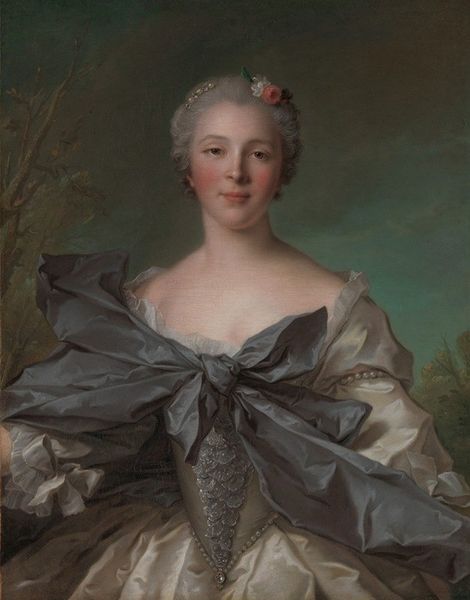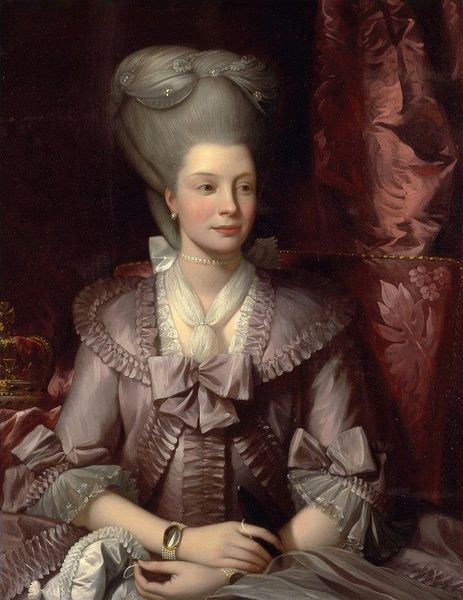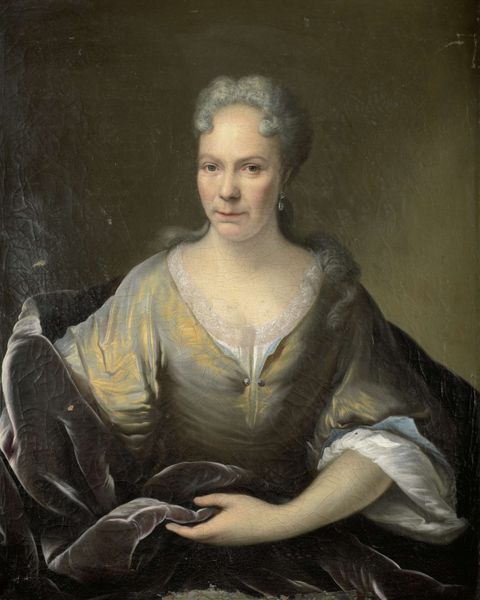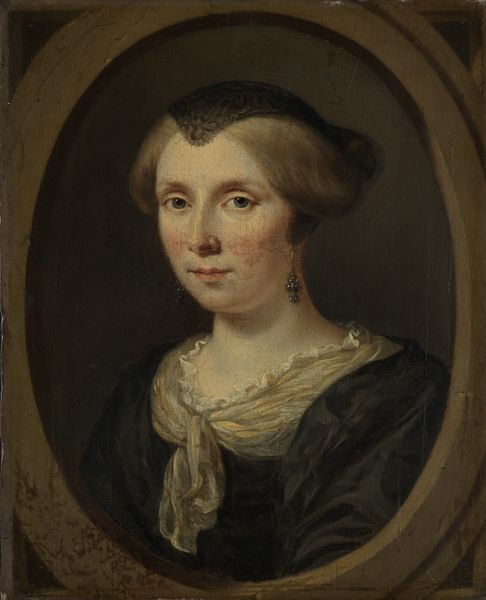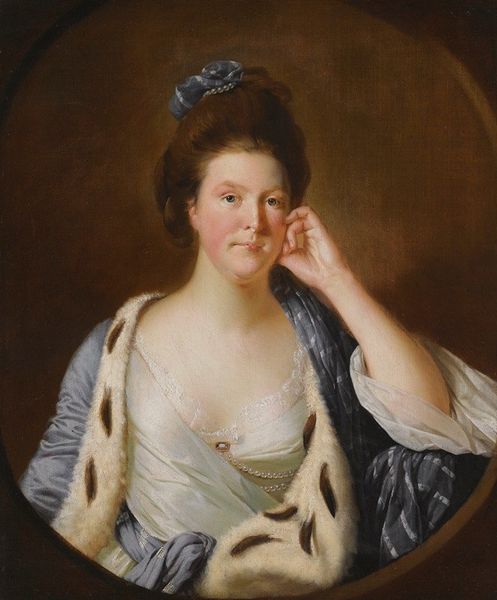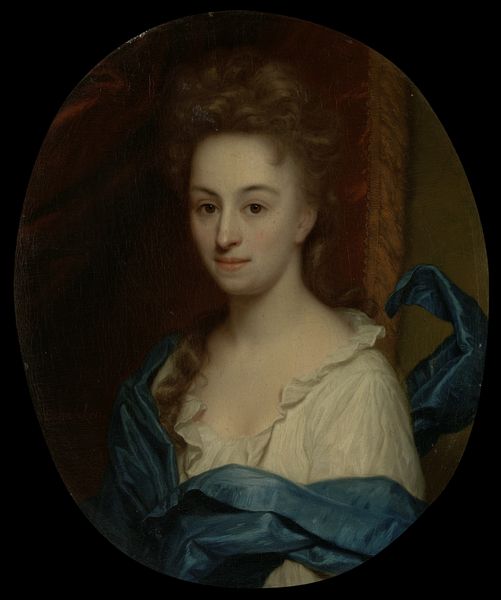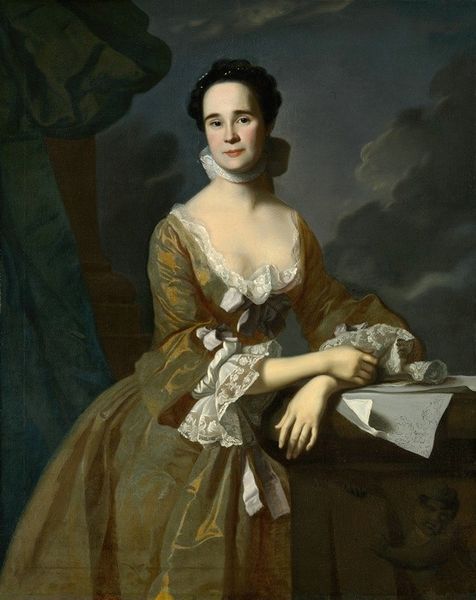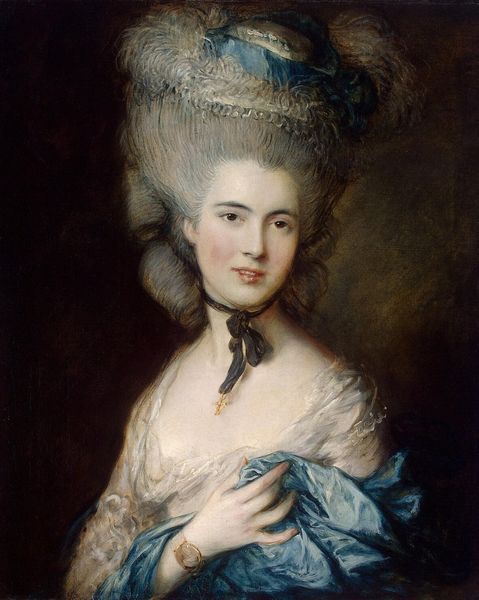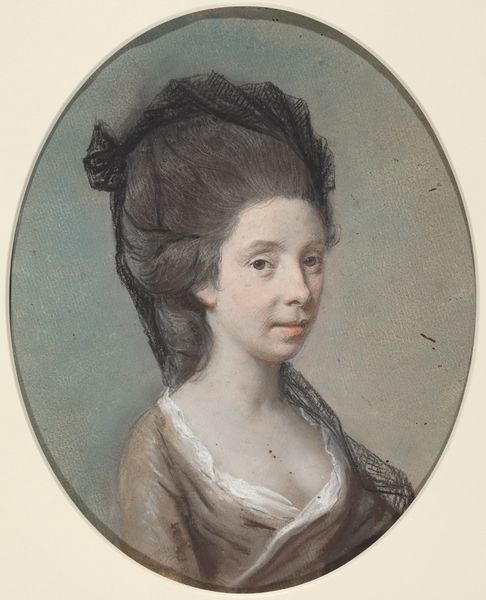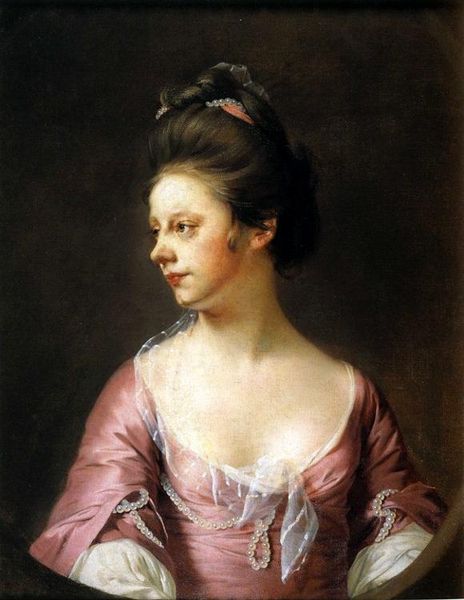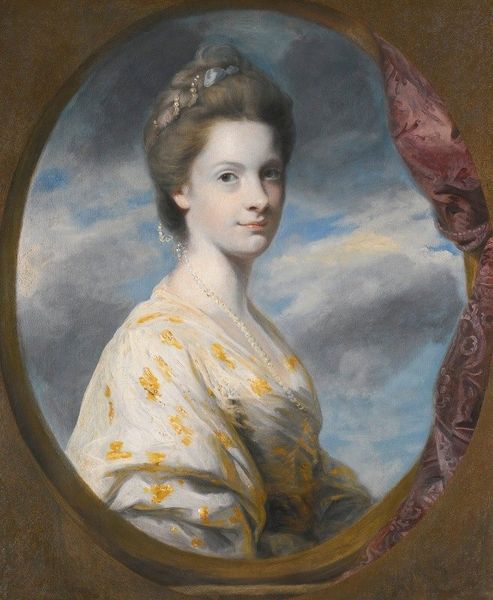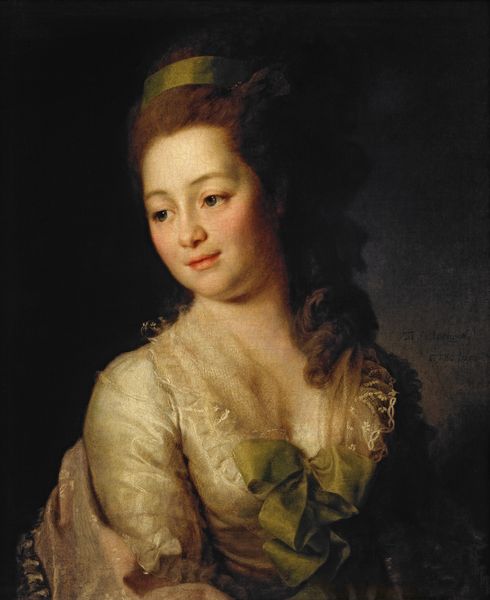
Portrait of Elisabeth van Riebeeck, Daughter of Abraham van Riebeeck, Wife of Gerard van Oosten 1710 - 1723
0:00
0:00
painting, oil-paint
#
portrait
#
baroque
#
painting
#
oil-paint
#
genre-painting
Dimensions: height 73.7 cm, width 58.8 cm, depth 5.5 cm
Copyright: Rijks Museum: Open Domain
Editor: Here we have Nicolaas Verkolje’s oil painting "Portrait of Elisabeth van Riebeeck, Daughter of Abraham van Riebeeck, Wife of Gerard van Oosten", dating from about 1710 to 1723. It feels like such a formal depiction. What story does this painting tell us, do you think? Curator: This portrait offers a fascinating glimpse into the Dutch colonial elite and the politics of representation. The very act of commissioning such a portrait speaks to Elisabeth’s family's wealth and social standing in the context of the Dutch East India Company. Consider how the artist is subtly conveying not just wealth, but also legitimacy and power within that colonial structure. Editor: So, the setting and her clothes aren't just decoration? Curator: Exactly. Notice the architectural elements and the landscape beyond – perhaps suggestive of her family's land holdings or influence. How might that backdrop and her attire function to present a specific image of colonial authority? And who was this image intended to impress or influence? Editor: It's like the portrait is actively constructing a particular narrative. I see the backdrop as a power symbol, but how did displaying these images reflect in a broader culture of colonial society? Curator: These portraits, prominently displayed in their homes, would have reinforced their status, impressing visitors and solidifying their position within the hierarchy. These visual markers contributed to constructing and maintaining a specific colonial identity. So, what happens when you remove the subject away from the colonial setting? How would that change the dynamics of her self representation? Editor: Wow, that's fascinating, thinking about it as active image-building, instead of passively reflecting reality. Thanks, I'm now picturing the broader picture here. Curator: And I'm contemplating Verkolje's skill not just as an artist, but as a key participant in that colonial image-making. Thank you!
Comments
No comments
Be the first to comment and join the conversation on the ultimate creative platform.
